Eye Surgeries
Eye Surgeries
The treatment of laser eye deviation varies from person to person because the measurement of vision and degrees of vision change with the change of a person’s age. At Batal Medical Center, we have performed ophthalmic surgeries specialized in treating ocular deviation and other eye diseases in children and adults. We will look at some of them below.
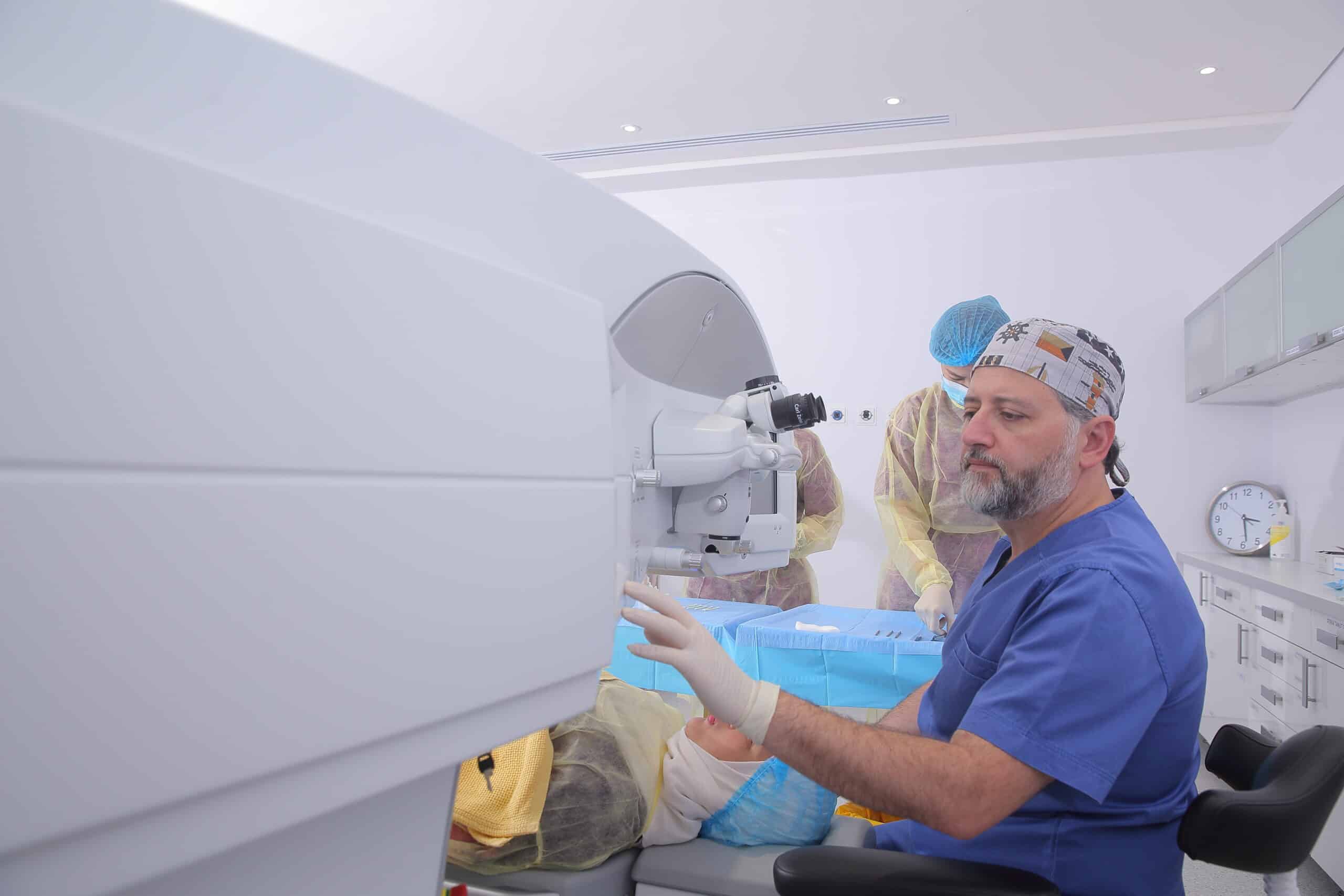
Our job is to make sure your eyes are fully measured before going further with treatment or intervention. There are a number of tests that help detect strabismus and the associated ocular deviation. The light reflection test assesses the alignment of the eyes by having the child look directly at the point of light. Another test uses prisms to analyze whether a person’s eyes are properly aligned.
What do people at risk or astigmatism see?
- People with sufficient, uncorrected astigmatism will have blurry, blurred, or distorted vision. However, many people have low rates of astigmatism where they don’t even have symptoms.
It requires at least 0.75-1.00 diopters of astigmatism to be noticeable, although this may vary depending on the individual and astigmatism can also cause vignetting of images.
This can make the letters appear as if they are doubled. Astigmatism at night can make vision particularly difficult, causing glare and debilitating halos around lights.
When children have astigmatism they may not be able to verbalize it and parents should pay attention to the symptoms described in addition to eye rubbing or closing one eye.
Eye deviation treatment
Types of specialized eye surgeries
Blepharoplasty: To repair drooping eyelids, the doctor makes an incision or small incisions to remove skin and muscle and remove or reposition fat.
Cataract surgery: A cataract is a cloudy area in the lens of your eye that can make it difficult to see clearly. The doctor uses small tools to remove the cloudy lens and replace it with an artificial lens.
Corneal transplant: The doctor uses a special tool to hold your eye open while removing the damaged part of the cornea and replacing it with healthy donor tissue. Doctors can perform a full-thickness corneal transplant (infiltrating keratoplasty) or a partial thickness transplant (lamellar keratoplasty).
Glaucoma surgeries: For glaucoma implants, the doctor inserts a small tube called a shunt into the white of your eye. The tube helps drain excess fluid from your eye, which reduces eye pressure. In trabeculectomy, the doctor creates a small opening in the upper part of your eye under your eyelid to allow fluid to drain. excess.
LASIK (Laser Keratomileusis): In laser eye surgery, a doctor uses a powerful beam of light (laser) to change the shape of the cornea, making vision clearer for adults who are nearsighted, farsighted, or astigmatistic. Photorefractive keratectomy, commonly known as PRK, may be used. As an alternative to LASIK for patients with dry eyes or a thin cornea.
Retinal surgeries: There are several procedures to repair a damaged or detached retina, and some can be used together to create small scars that will repair a tear or hole and help stabilize the retina. Photodiometry) and in scleral clip surgery, the surgeon places a small, flexible band around the white part of your eye (sclera) and this band gently pushes the sides of your eye against your retina to help it re-adhesive and in the retinal fixation process Pneumatic The doctor injects a small air bubble in the middle of the eyeball to push the retina into place before applying the freezing or burning treatment. The bubble will disappear on its own over time. Vitrectomy involves using a suction tool to remove most of the vitreous (the jelly-like substance that fills the eye) allowing the surgeon to have better access to the retina and make room for the bulla.
Eye muscle surgery: Strabismus is a condition in which the eyes do not move together as a pair, and one eye may drift inward, outward, up, or downward. Surgery is not the only treatment option, but when needed, the surgeon tries to return the eye muscles to the proper position using techniques that weaken or strengthen them. This involves removing part of the muscle or reattaching it to a different point in the eye.
Understanding astigmatism
The cornea is the clear surface of the eye and the lens is placed under the cornea inside your eye. The cornea and lens bend the light that enters your eyes to help you see. They are both curved and when they have a circular curve, you can see clearly.
But many people do not have perfectly round eyes. If the cornea or lens has mismatched curves, this is called a refractive error. Astigmatism is a type of refractive error and can interfere with the clarity of your vision.
If you suffer from astigmatism, your eye is shaped like an egg or a soccer ball. The condition may be the result of an eye disease or injury, but in most cases astigmatism has been present since birth.
Astigmatism is a common condition and often comes with other refractive errors such as nearsightedness (myopia) and farsightedness (hyperopia). You may have astigmatism if you experience:
Blurry vision, near or far.
Headache.
Eyestrain.
eye fatigue
Poor night vision.
Information about astigmatism
Astigmatism is generally easy to diagnose with a comprehensive eye exam. Our team performs a series of eye tests using special instruments including a keratometer to measure the curvature of the cornea and a phoropter to see how your eyes refract light.
If your vision is blurry without corrective lenses, you likely have a refractive error and our team can determine whether you have nearsightedness, farsightedness, astigmatism, or a combination of conditions.
The degree of treatment of your astigmatism is determined by the severity of the condition. Some people have slight astigmatism, while others have more pronounced curves. You may have astigmatism in only one eye or both eyes.
Our team at Batal Specialist Complex regularly treats astigmatism and other refractive errors and eye deviations through:
Prescription glasses.
Prescription contact lenses.
IntraLase® LASIK surgery.
Eyeglasses and contact lenses counteract the degree of curvature in each eye to improve the clarity of your vision. LASIK surgery permanently reshapes the cornea to improve vision without corrective lenses, while orthotics is a treatment that uses hard contact lenses to gradually reshape the cornea.
Whether you suffer from mild or severe astigmatism, you can have clear vision at any time of the day or night. Our team at Batal Specialist Eye Complex is happy to provide customized treatment plans for astigmatism to give you the best vision for you.
Pharmacological treatment
If the squint or eye deviation is in one eye, the doctor prescribes a drop that is mainly used for the healthy eye in order to distort the vision in it and focus on stimulating the affected eye. It just can’t treat averted vision in the long term.
Eyeglasses or contact lenses
Laser eye deviation treatment
Ocular septum surgery
Regular and irregular astigmatism
normal astigmatism
The main meridians are perpendicular to each other and form an angle of 90 degrees. Most cases of astigmatism are regular and affect the cornea.
Irregular astigmatism
The prime meridians are not vertical. It may be the result of an injury or surgery that has caused scarring of the cornea. In addition, it may be caused by keratoconus, an eye problem that causes thinning and deformation of the cornea
What are the considerations for anesthesia during eye surgery?
For example, the first volume differs from the beginning of the plenary session, but sometimes it seems that this field seems to indicate that, during the session, this level of space from the beginning of the plenary session, or that level of the plenary session, indicates that it is trying to move your head in folder and patient. This makes corrective surgeries excessively performed by the surgeon.
Monitored anesthesia is also preferred in most cases due to the position of the surgeon and anesthesiologist during eye surgery. For most other surgeries, the anesthesiologist is placed next to the patient’s head and the surgeon is near the middle of the body. For eye surgeries, the positions are reversed, and this makes it more difficult for the anesthesiologist. To quickly intervene to take corrective action if the patient has breathing difficulties which are likely to occur under general anesthesia.
Eye surgery at Batal Eye Center
Our job is to recommend the perfect surgical pathway to fit your personal needs. Some people may suffer from another health problem (for example, diabetes) in addition to eye defects that make the type of surgery not suitable for him. A pregnant woman also should avoid any eye surgeries because hormonal changes will affect the results of the operation. The nature of a person’s work is also one of the most important determinants of appropriate eye surgery and the type of vision correction he needs, and from here there are many options for laser eye treatment.
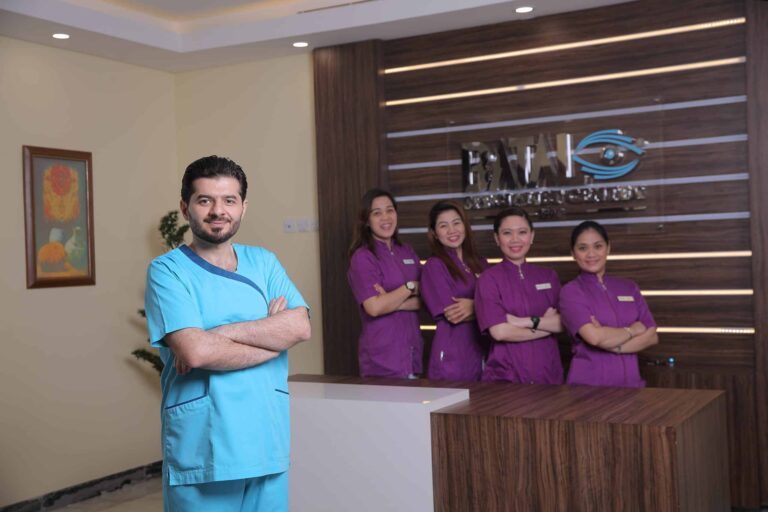
Presbyond
The Presbyond operation is a suitable treatment for a large proportion of people who suffer from nearsightedness with age. Although the operation is primarily used to compensate for reading glasses, it can be combined with the treatment for correcting myopia, hyperopia and astigmatism, which is what we do at Batal Specialist Center.
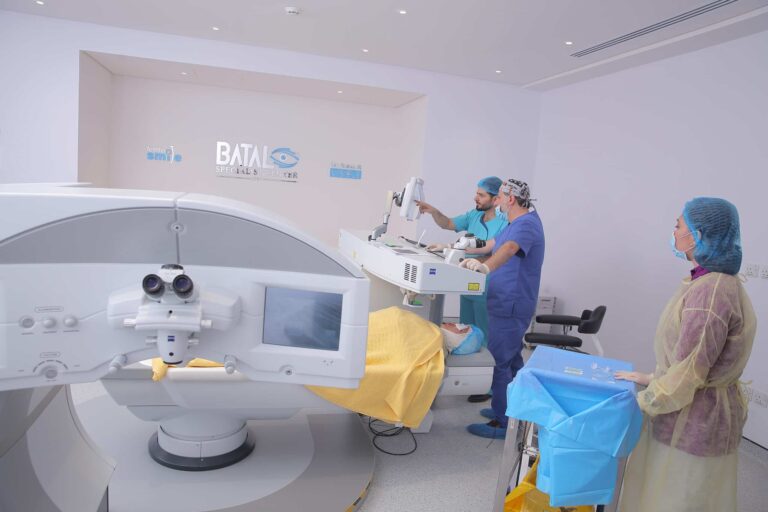
Femto Lasik
Similar to LASIK, during which laser vision is corrected and the cornea is reshaped in order to correct vision defects. It is a successful solution for treating myopia cases that are not suitable for LASIK surgery. The competitive advantage is that it depends on the laser completely without the need to use the surgical scalpel used in the LASIK procedure.
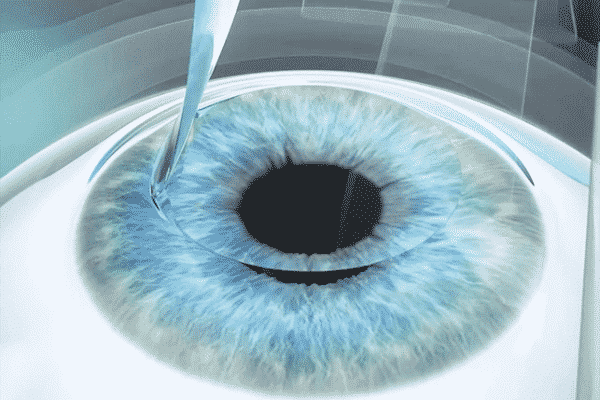
Femto Smile
Femto Smile is the latest laser technology used in the field of eye diseases, treatment and vision correction, a process in which the latest laser technologies are used to correct nearsightedness and astigmatism in one step, and it combines the results of traditional vision correction techniques with comfort and accuracy.
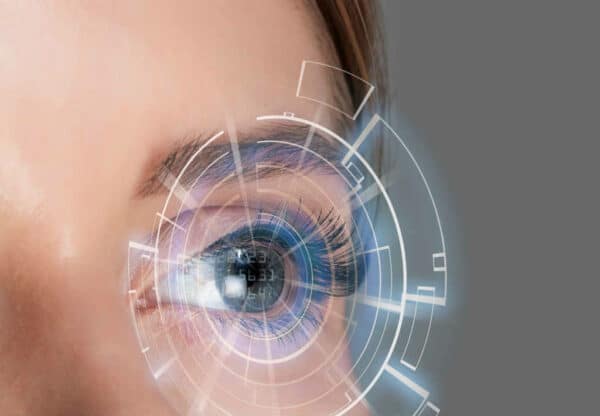
LASIK
This process corrects the cornea in order to focus the light on the eye and reach the retina and is well suited for those who suffer from nearsightedness, farsightedness or astigmatism in the twenties and thirties. This process requires the finest precision preceded by an eye examination with digital imaging devices.
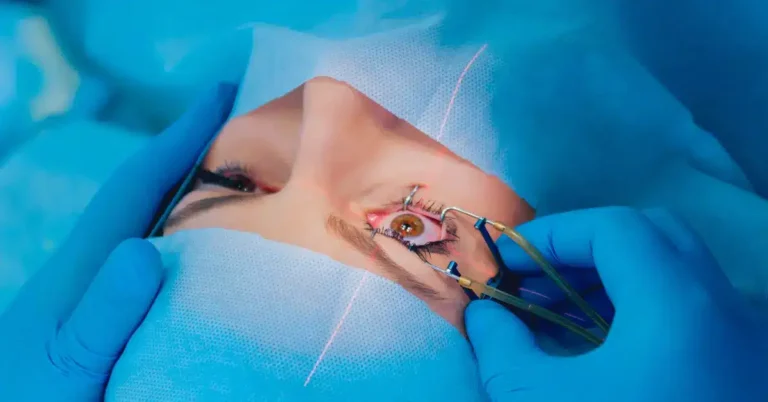
Laser dorsal keratoconjuncture or LASIK surgery
Laser epithelial keratoplasty is a process by which the cornea is reshaped by laser. It treats nearsightedness, farsightedness and astigmatism, and is a superficial laser treatment suitable for thin cornea.
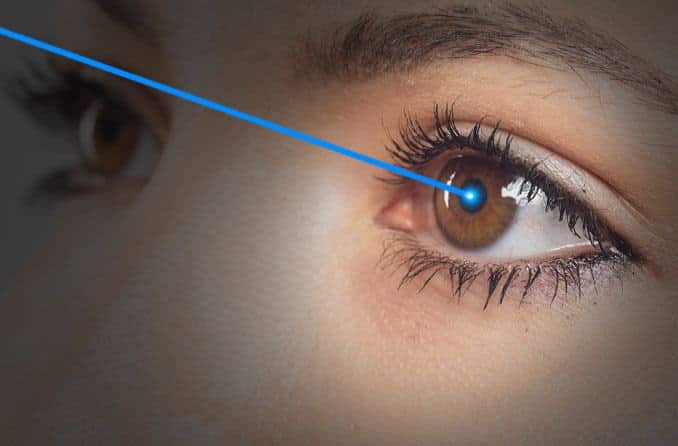
RLE operation replaces a refractive lens or CLE
This is a process to correct vision and treat cataracts, during which we at Batal Specialist Center make a small incision at the edge of the cornea to remove the natural lens of the eye and replace it with a flexible plastic lens in order to treat severe farsightedness or nearsightedness, correct the thin cornea, treat dry eyes and other eye diseases that are not suitable for the operation Lasik. Suitable for patients over 40 years old.
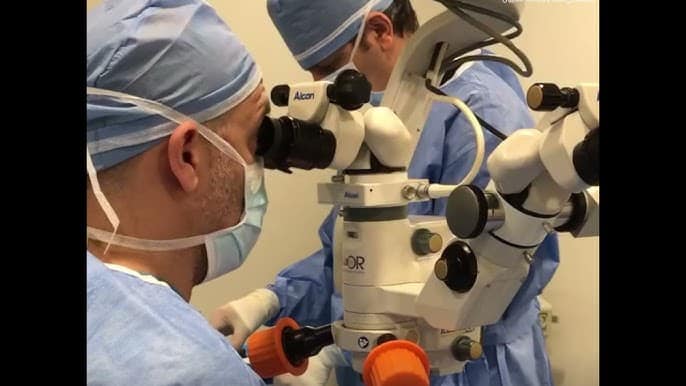
Epi LASIK surgery
One of the options for laser eye treatment, in this process we separate a thin layer of the cornea and then reshape it or replace it with a soft adhesive lens to protect the area and it is suitable for treating astigmatism, farsightedness, farsightedness and astigmatism in cases of thin cornea, preceded by a careful eye examination to measure the thickness of the cornea.
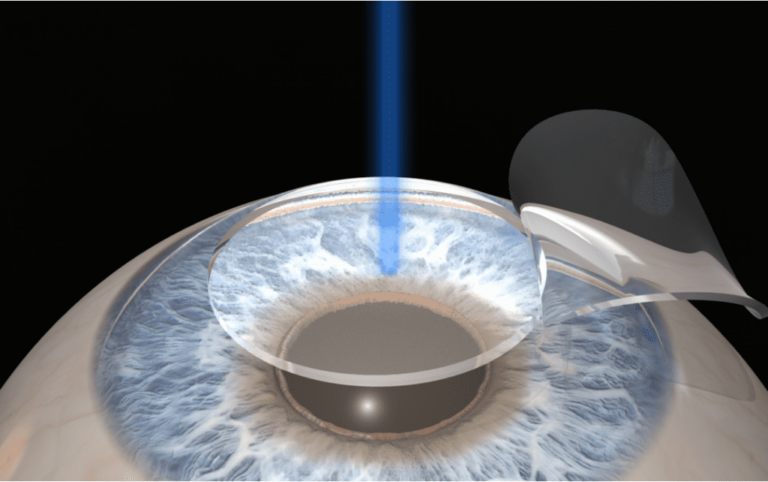
Prelex lens refraction exchange
We have performed hundreds of these procedures to treat presbyopia, where patients complain of difficulty seeing close objects as the eye’s natural lens loses its elasticity with age. This operation takes only a few minutes at Batal Eye Specialist Center, during which we make a small incision to implant a multifocal lens inside the eye to improve eye elasticity and correct vision.
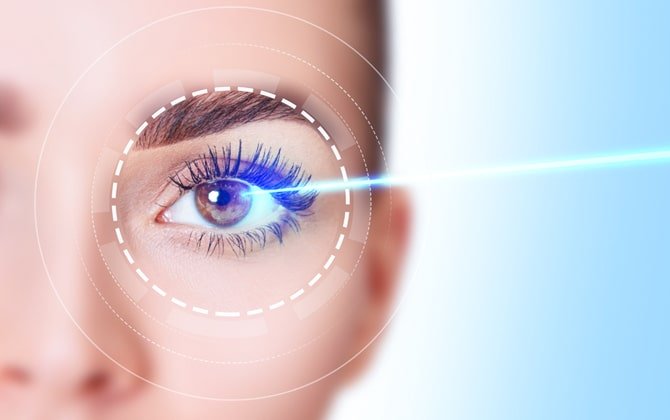
Intraocular lens implantation
Some patients with severe nearsightedness require an intraocular lens implant. In this type of highly specialized eye surgery, we insert an implant through a very small incision at the edge of the cornea and connect it to the iris behind the pupil while leaving the eye’s natural lens in place.
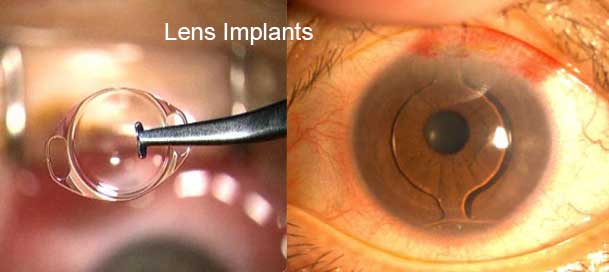
Astigmatism keratectomy
It is a surgery that corrects astigmatism without using a laser by making a small incision or two incisions to control the degree of steepness of the cornea and achieve relaxation of the cornea. The procedure can be performed alone to correct astigmatism or be performed with other laser eye surgery, depending on the case.
Talk to one of the Batal Specialist Center’s doctors about any problem your eyes are suffering from, and be sure that you will be in the hands of specialists who have performed specialized eye surgeries for hundreds of patients.
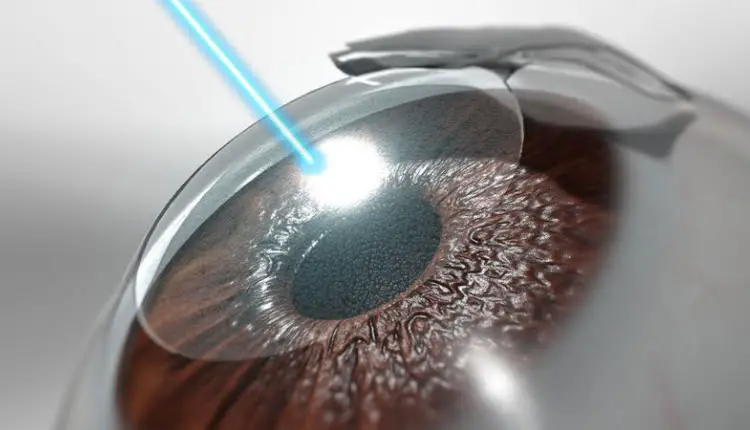
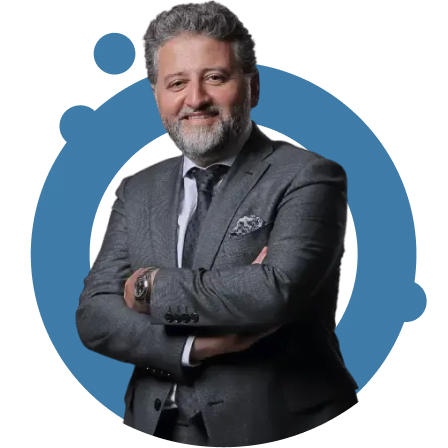
Senior Consultant, Pediatric Surgery and Eye Surgery Fellow of the British Royal Surgical College Fellow of the American Academy of Ophthalmology
Specialization: Strabismus and pediatric eye surgery
Degree: Member of the British Royal College of Surgeons and Member of the American Academy of Ophthalmology
Batal Eye Center
Call us 8001111897
Contact us via Email: info@bataleyecenter.com
Address: 8125 Prince Sultan road, Murjana tower Jeddah, Saudi Arabia



